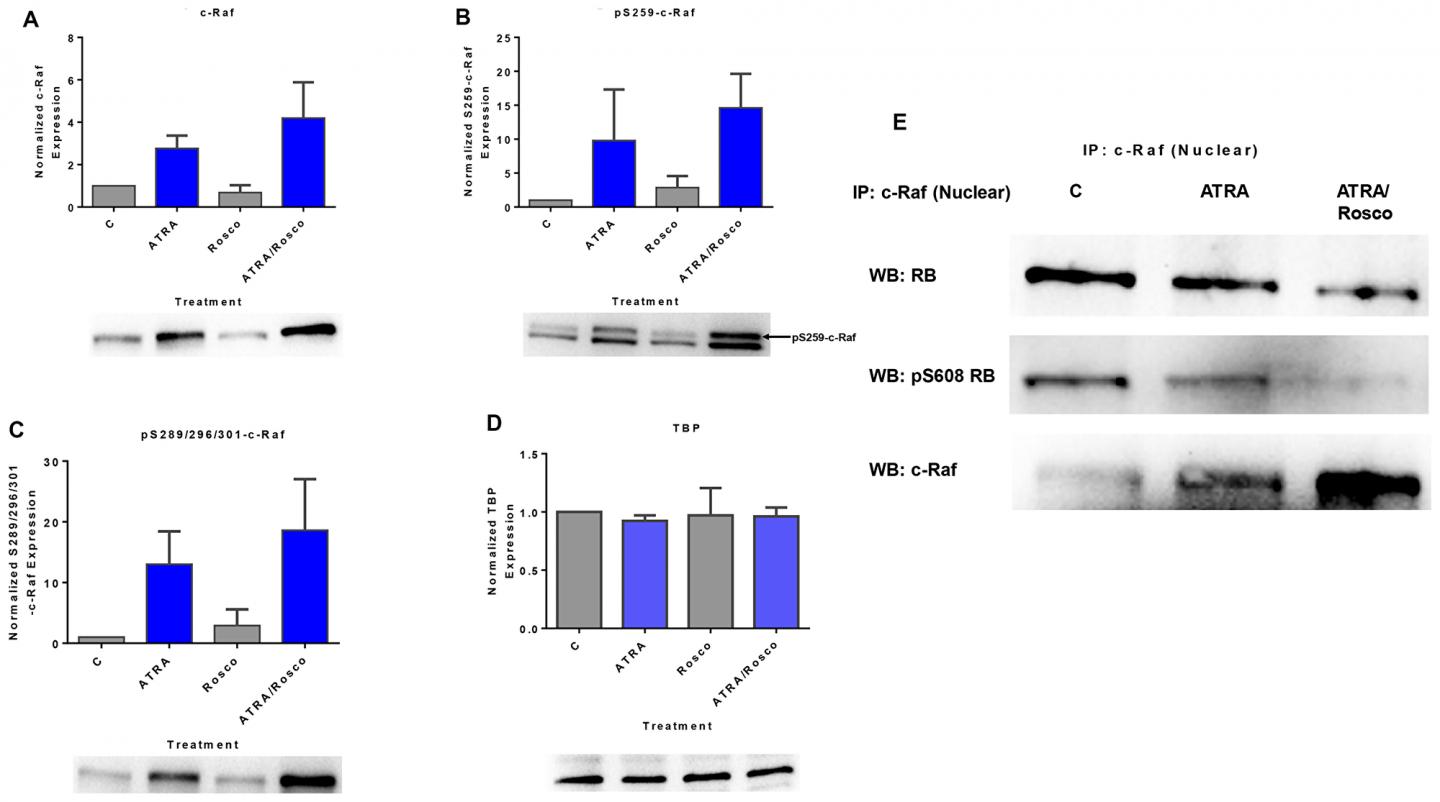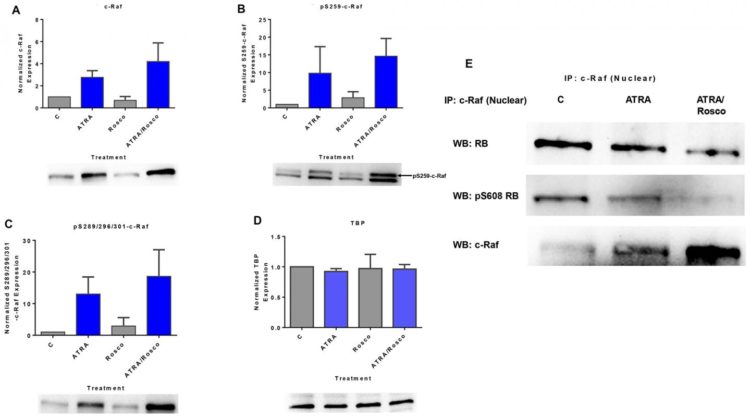Oncotarget Volume 11, Issue 12 reported that using the HL-60 human non-APL AML model where ATRA causes nuclear enrichment of c-Raf that drives differentiation/G0-arrest, the research team now observe that roscovitine enhanced nuclear enrichment of certain

Credit: Correspondence to – Mengsu Yang – [email protected] and Andrew Yen – [email protected]
Oncotarget Volume 11, Issue 12 reported that using the HL-60 human non-APL AML model where ATRA causes nuclear enrichment of c-Raf that drives differentiation/G0-arrest, the research team now observe that roscovitine enhanced nuclear enrichment of certain traditionally cytoplasmic signaling molecules and enhanced differentiation and cell cycle arrest.
ATRA-induced loss of pS608RB with cell cycle arrest was associated with loss of RB-sequestered c-Raf, thereby coupling cell cycle arrest and increased availability of c-Raf to promote differentiation.
Roscovitine also enhanced the ATRA-induced nuclear enrichment of other signaling molecules traditionally perceived as cytoplasmic promoters of proliferation, but now known to promote differentiation; in particular: SFKs, Lyn, Fgr; adaptor proteins, c-Cbl, SLP-76; a guanine exchange factor, Vav1; and a transcription factor, IRF-1.
Dr. Mengsu Yang from the Department of Biomedical Sciences, City University of Hong Kong, Kowloon, Hong Kong SAR, People’s Republic of China and Dr. Andrew Yen from the Department of Biomedical Sciences, Cornell University, Ithaca, NY, USA said, “All-trans retinoic acid (ATRA), a retinoid metabolite of vitamin A, regulates gene expression in a number of physiological processes, including morphogenesis, vision, growth, metabolism, differentiation and cellular homeostasis.”
ATRA induces these cells to undergo myeloid differentiation and G0 cell cycle arrest that depends on a sustained MAPK pathway signal with up-regulation and unanticipated translocation of c-Raf to the nucleus.
In ATRA-induced differentiation of leukemia cells, Vav1 also interacts with PU.1, recruiting it to the promoter to transcriptionally activate expression of the CD11b differentiation marker.
This enhances its interest in chemotherapy and, as the authors now report, particularly for ATRA-based differentiation induction therapy, which is an entirely novel mechanism for this drug that reveals novel therapeutic vulnerabilities as well as basic molecular mechanistic features of ATRA-induced differentiation of leukemic cells.
Lyn knockdown augmented certain roscovitine enhancements of ATRA effects on nuclear signaling and cell cycle regulatory molecules.
The novel activation of the signaling molecules and translocation to the nucleus during ATRA-induced differentiation is enhanced by roscovitine with concomitant enhancement of induced differentiation.
The Yang/Yen Research Team concluded in their Oncotarget Research Paper, “the current study showed that roscovitine exhibits effects beyond its original presentation as a CDK inhibitor (Figure 9A and 9B). Roscovitine may modulate nuclear molecules and enhance the therapeutic effects of ATRA in HL-60 cells. To the best of our knowledge, this study is the first to report that roscovitine potentiates ATRA in inducing myeloid leukemia cell differentiation, the mechanistic insights of which suggests new therapeutic targets to improve the clinical efficiency of ATRA to treat myeloid leukemia.”
###
Sign up for free Altmetric alerts about this article
DOI – https:/
Full text – http://www.
Correspondence to – Mengsu Yang – [email protected] and Andrew Yen – [email protected]
Keywords – ATRA, roscovitine, APL, HL-60, Lyn
About Oncotarget
Oncotarget is a weekly, peer-reviewed, open access biomedical journal covering research on all aspects of oncology.
To learn more about Oncotarget, please visit http://www.
SoundCloud – https:/
Facebook – https:/
Twitter – https:/
LinkedIn – https:/
Pinterest – https:/
Reddit – https:/
Oncotarget is published by Impact Journals, LLC please visit http://www.
Media Contact
[email protected]
18009220957×105
Media Contact
Ryan James Jessup
[email protected]
202-638-9720
Original Source
https:/
Related Journal Article
http://dx.





